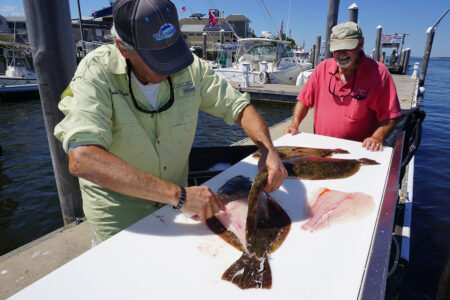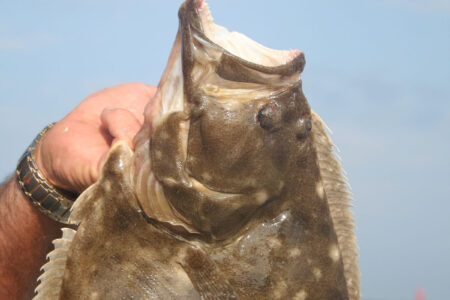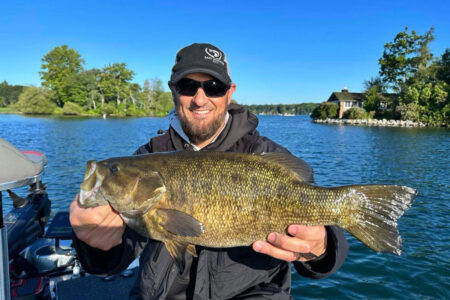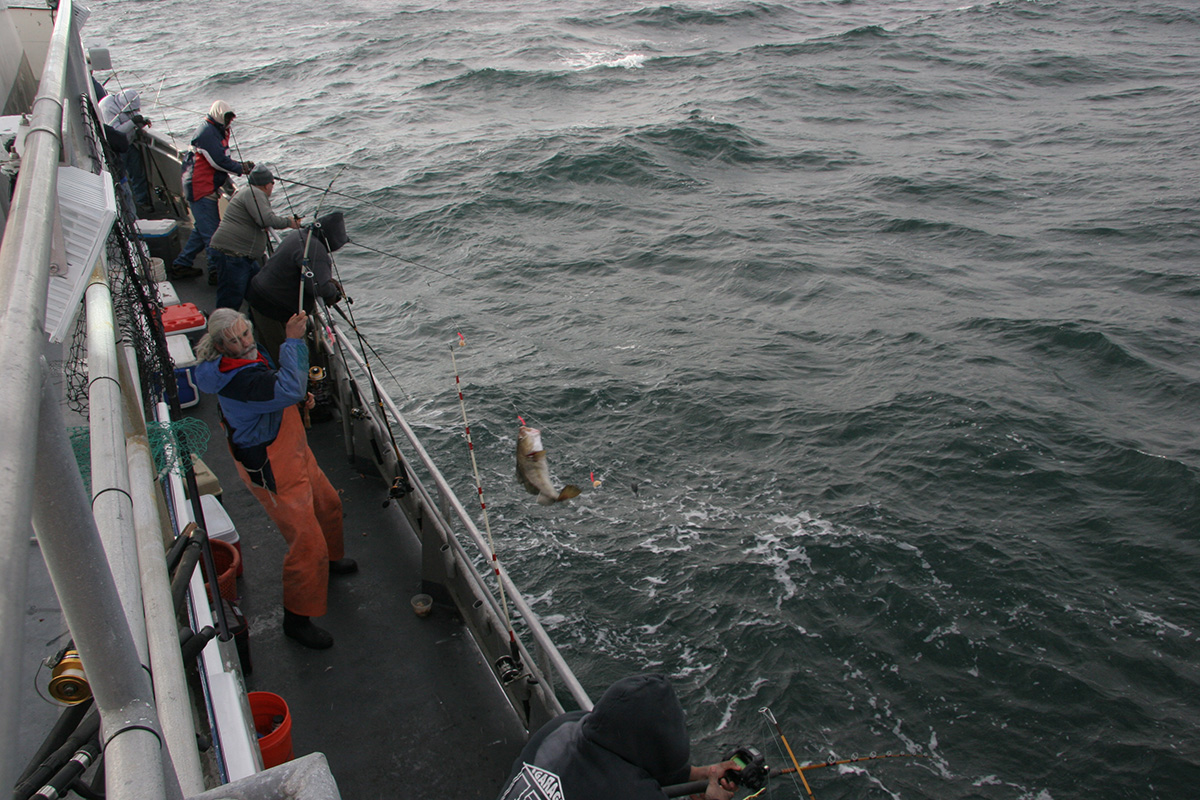
Let’s not candy-coat it, February is not the best month for fishing. You would think the only fishing game in town is to drill a hole through the ice and manically try to jig up fish while sitting on a 5-gallon bucket. Truth be told, I do love the insanity of ice fishing, but as saltwater runs through my veins, you cannot overlook the fact that there is actually a pretty decent fishery going on at the offshore wrecks in the Atlantic.
As arctic air temperatures challenge even the hardiest of anglers, the fish don’t seem to mind, quite the contrary in fact as wreck fishing for cod, pollock, and ling is truly top notch. Spy any wrecks in the 20- to 60-mile range, and you could find yourself fast into some bottom brawling action. The easiest route to this fishery is to hop a ride on one of several South Shore open boats that continue to fish through the winter, targeting cod, ling and pollock, with mackerel sometimes an added bonus. This time of year, it behooves you to confirm sailing schedules before heading down to the waterfront. Weather forecasts can change in a hurry and it is not unusual for sailing schedules to change, especially where long range wreck trips are planned.
Wreck Hunting
The ocean bottom off of Long Island’s South Shore is well populated with shipwrecks, some better known than others. A shipwreck acts like an oasis in a desert, where life congregates around a structure in an otherwise vastly empty sand or mud floor barren plain. The type of species you plan to target will help define your game plan. Low profile wrecks tend to hold the true bottom feeders like ling, while mid profile wrecks attract bottom level dwelling cod and higher profile wrecks will invariably magnetize schools of pollock above them.
Wrecks can be comprised of wooden material or metal components, and most wrecks will also have plenty of byproduct additions and snags to them such as derelict commercial nets and gnarled piping. As well, cargo from the ships that can take the form of train cars, army tanks, 50 gallon drums, rubber tires, ballast rock, appliances and other such detritus, all providing hideouts and ambush spots for the sea life around.
Check resources such as Captain Segull’s Nautical Charts or Home Port Charts available in your local marina or tackle shop, or even hit up online resources like the Hotspots at TheFisherman.com or www.njscuba.net to get a good idea of what wrecks lay out there for those of you who want to go wreck hunting on your own.
Cod & Pollock
The prized possession of any winter wreck angler is the codfish. Known for its succulent buttery white meat, the “bacala” is tops on the hit chart for table fare, as well as fighting ability. Atlantic cod hover just off the bottom area of a wreck, many times patrolling the outside edges of a structure, but also getting into the nitty gritty and worming themselves into areas such as pilot houses, fuel tanks and cabins of the sunken ships. Many cod connoisseurs will tell you the largest fish they catch are usually found on old low profile wooden shipwrecks that are half buried in the sand. Older wrecks tend to harbor big cod due to the amount of growth and marine life associated with wrecks that have been underwater for quite some time, allowing for the ecosystem of mussels, clams, crabs, sea worms and the like to colonize the area in an ever-present chain of life.
To target cod, fresh clams are the prime bait. Anglers either lump a gob of fresh clam whole on the hook, or cut the clam tongue out and lance it once through the tip onto the hook. A three-loop dropper rig is standard, tied with a 48-inch piece of 50-pound Seaguar fluorocarbon leader, a dropper every 18 inches up, bank sinker on bottom. Size 5/0 to 6/0 Gamakatsu baitholder or octopus hooks pierce the cod’s mouth with power, and don’t be shy to use 4-inch red, green or purple tubes on the dropper above the hook as cod are suckers for that colorful bling.
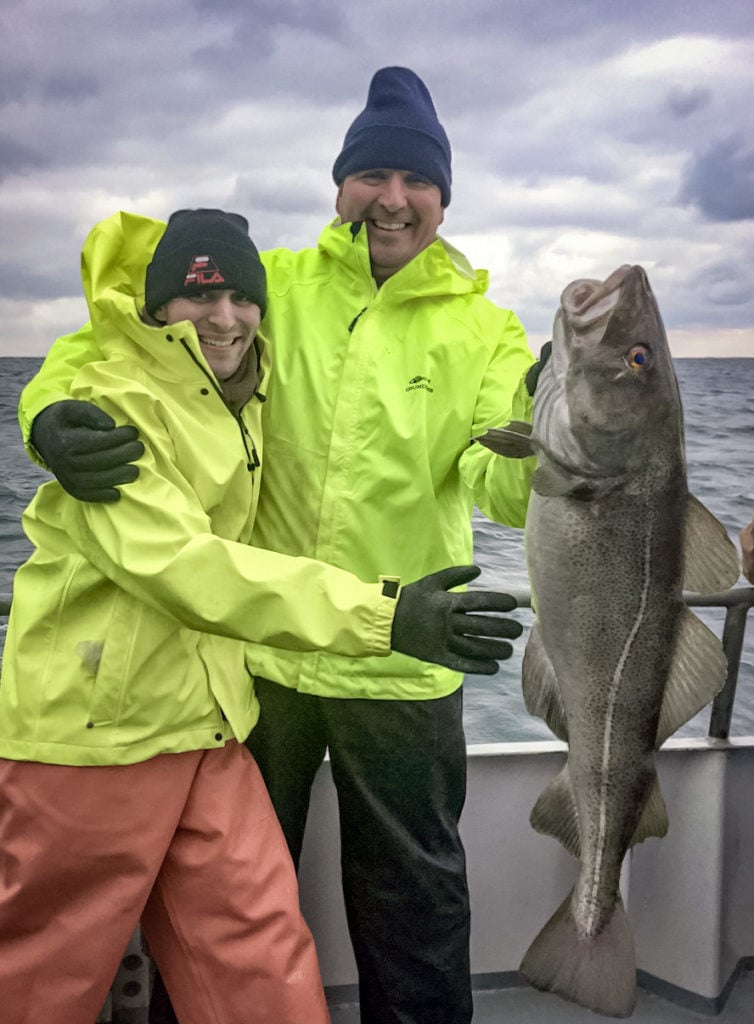
Known as the knockout punch fighter, pollock are probably the toughest battlers of the offshore wreck scene as their muscle headed surges are accompanied by long, drag zipping runs. The key to finding pollock is to have a keen eye on the fishfinder; that’s because pollock tend to hang above any wreck structure, sometimes 30 to 50 feet above, and most open boat anglers who catch pollock usually happen into them by luck and chance as they are dropping down their baits or reeling them up quickly through the water column.
You can better target pollock by starting out with 8- to 12-ounce metal jigs such as Williamson Benthos, Crippled Herring, Hammered Diamond, or Vike Jigs. Drop a jig down to the bottom and simply reel it up at a moderate pace, or if you are marking fish at a certain level, drop it down there and employ a long, sweeping jig motion to give the jig the fluttering action needed to trick a strike. Most times pollock hit the jig when it is falling, so if you feel a slack in the line, reel up tight and be prepared to immediately set the hook since the pollock grabbed the jig in its mouth and is running off.
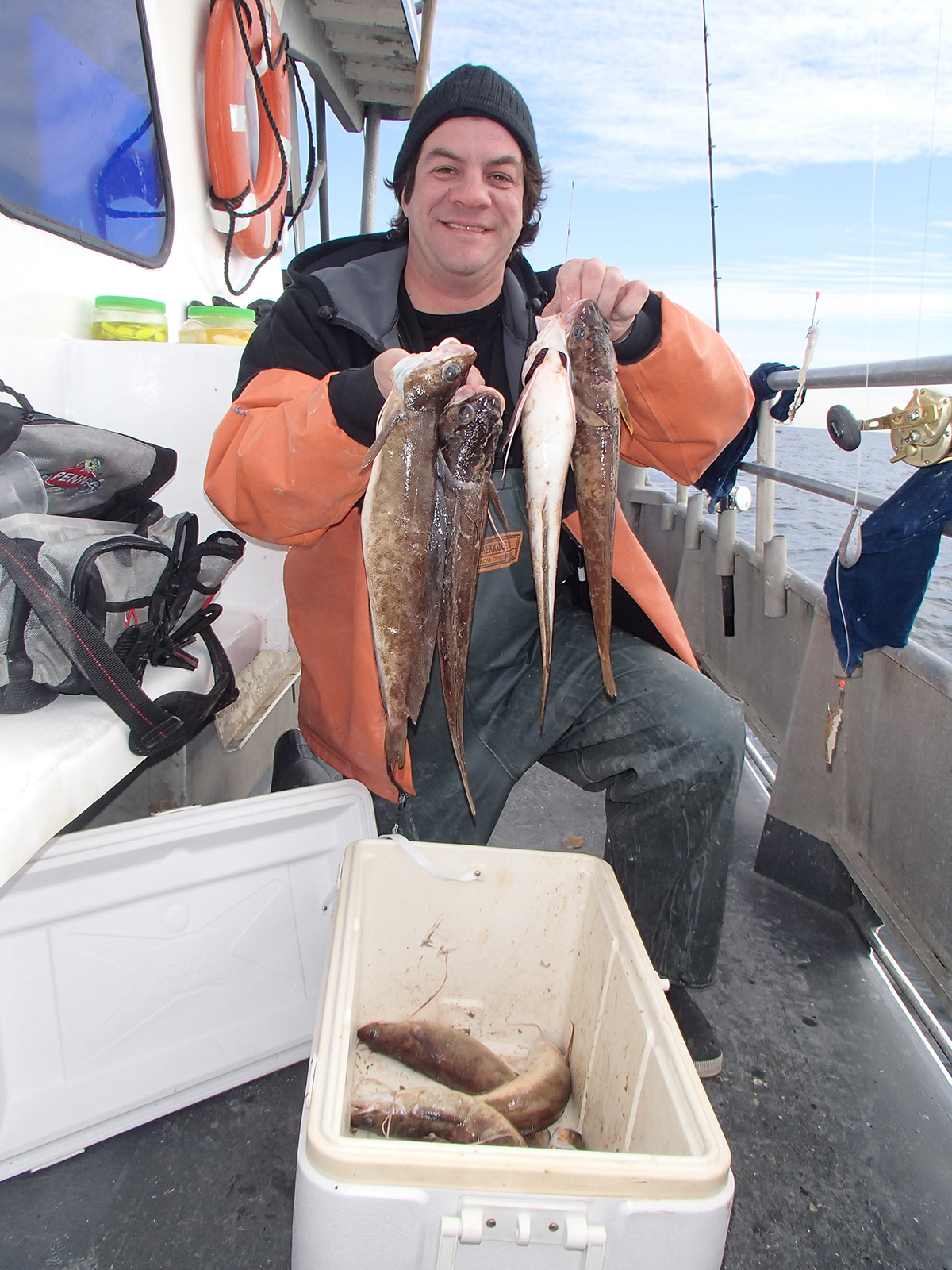
Equally Tasty
Ling or red hake are certainly less than glamorous; with a slimy, brown coating and a face only a mother could love, you would think why would anyone target them? The answer quite simply is because they are absolutely delicious and provide a ton of rod bending activity where average catches can sometimes run between 15 and 60 per man.
But the ling can be a very fickle fellow. While the guy next to you is bailing ling after ling, you may be in the black hole. Ling sometimes nip at baits and not fully commit, and that’s when you should put some slack in the line and allow the bait to rest completely on the seafloor. A general two-hook bottom rig is best to use for ling, consisting of size 3/0 Gamakatsu octopus hooks. Strips of bergall will get strikes from the true “Louisville Slugger” baseball bat ling of 3 to 6 pounds, but in general clam bits work to fool the smaller ones to fill the cooler with.
Now, depending on your point of view and what you enjoy eating, there is a cavalcade of assorted wreck beasties available on wrecks if you so desire to go after them, though they are mainly caught as bycatch. These brutes are either looked at as pests or something to put in the pan, but no doubt they put up a fight. Top on the list is the conger eel, which average 3 feet but can attain lengths of 6 feet long and weigh over 50 pounds.
Ocean pout are commonly called “congo eels” and they kind of resemble an even uglier oyster toadfish if you can imagine that. Bergalls, aka ocean perch, are the “bait stealers” of the wrecks, and the small ones make great strip bait, but if you can catch a few over the pound mark, they are great eating.
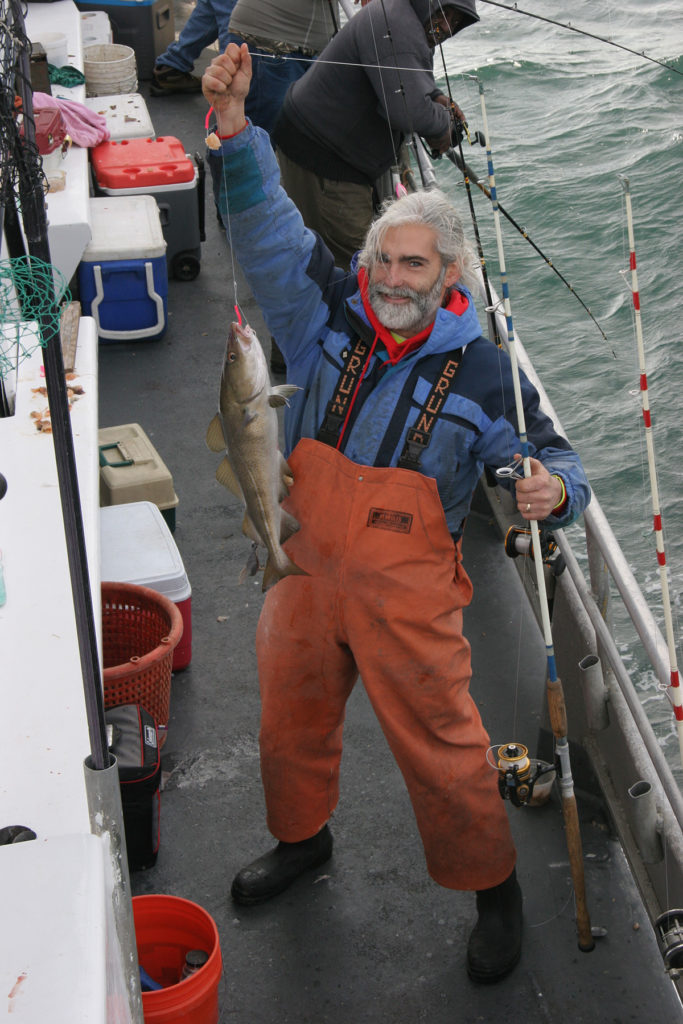
| WINTER WEAPONRY – FEBRUARY GEAR |
|---|
|
Bottom bouncing in the winter months requires a rod with backbone to pull out snags and muscle fish up from the depths as well as a high-speed retrieve reel with shoulders to wrestle fish up efficiently and effectively out of the structure. Generally a 6- to 7-foot stout rod, with a moderate flex on the tip, and a high speed retrieve 16 to 20 class reel with a 5.3:1 or 6:1 ratio are favored, since the depths can become cumbersome when reeling up to check your bait. I use a Lamiglas 7040CT rod and a Shimano Torium 20 reel. Reels can be lined with 50- to 65-pound Power Pro – I use plain green, but the Depth Hunter line of Power Pro has four colors (blue, yellow, green and orange) with 25 feet of color per segment, which is helpful for knowing exact depths. At the end of my braid, I usually add a 10-foot top shot of 40- to 50-pound TripleFish leader material, tied via Albright knot. – N. Honachefsky |
| WINTER WRECK TRIPS |
|---|
| Captree Princess: Captree – 631-404-6817 Starstream VIII: Freeport – 516-623-5853 Super Hawk: Pt. Lookout – 516-607-3004 Capt. Al: Pt. Lookout – 516-623-2248 Capt. Dave III: Sheepshead Bay – 718-491-9702 |
